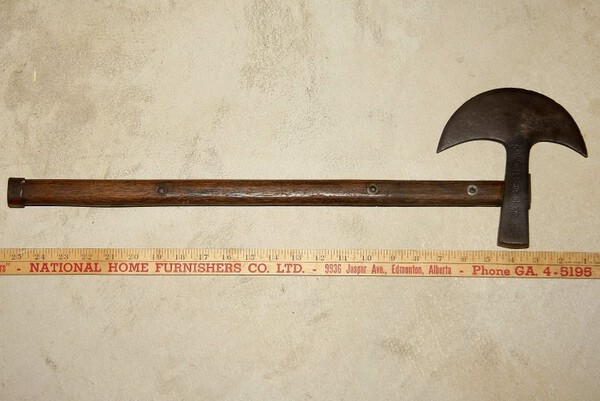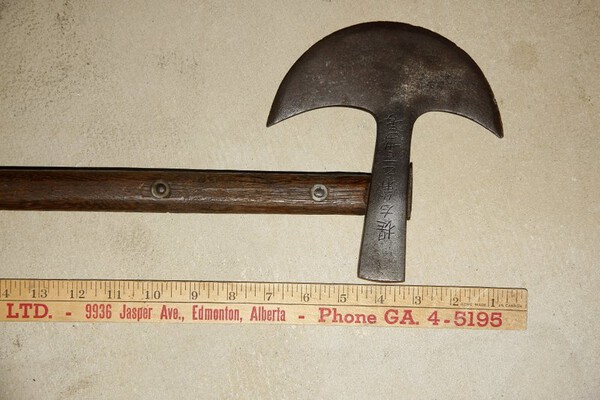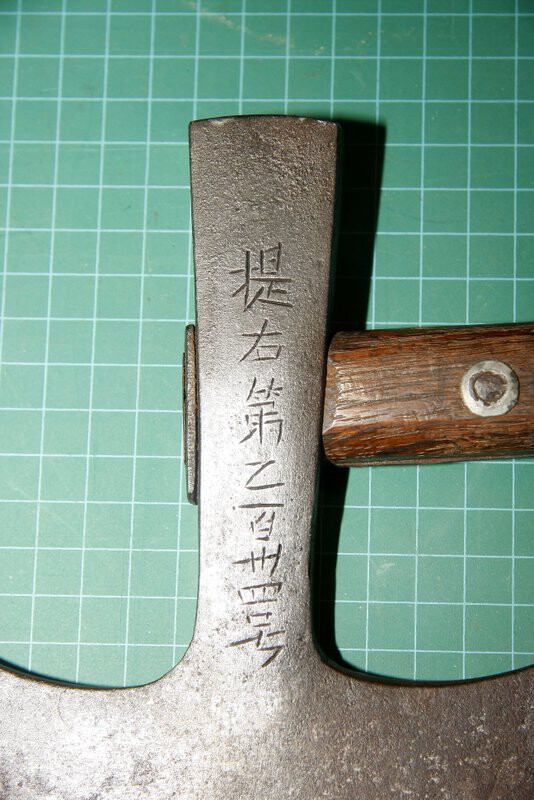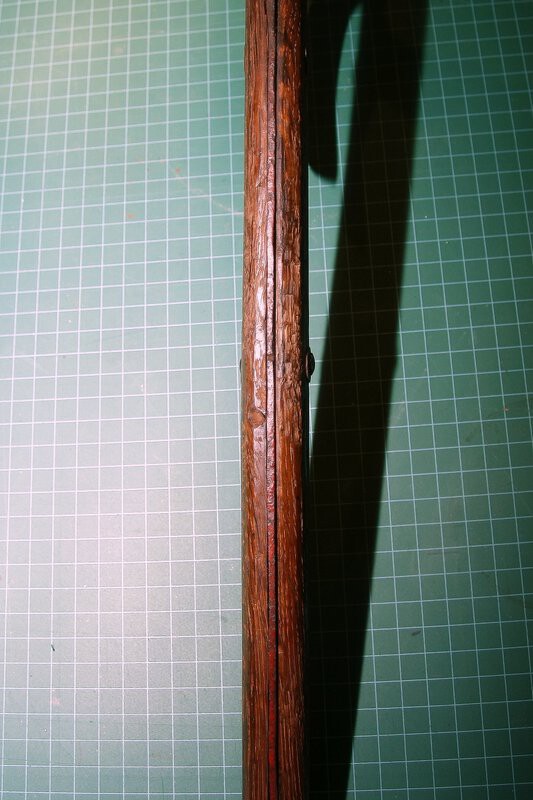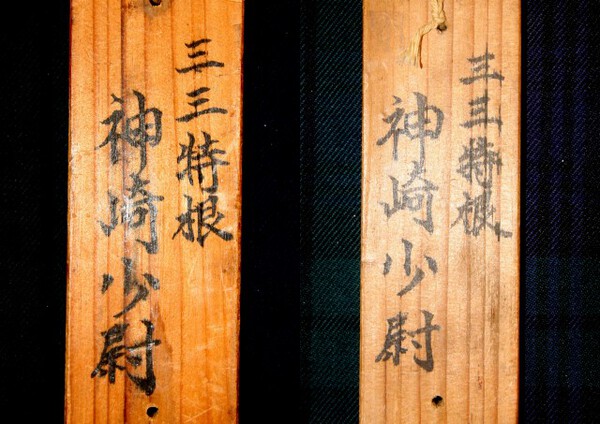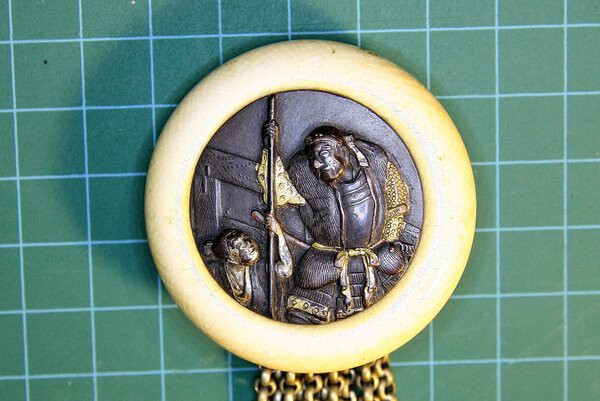
GregN
Members-
Posts
20 -
Joined
-
Last visited
Profile Information
-
Gender
Male
-
Location:
Vancouver, BC
-
Interests
Indo-Persian arms, armour, Nihonto, Canadian Militaria
Profile Fields
-
Name
Greg N
GregN's Achievements
-
I would like to thank you all for helping me with my tsuba. Apologies to Ken for adding this tsuba to my collection, the good news is that I don't plan to collect ONLY mantis motifs Sincerely, Greg
-
Hi all, I would like to present to the Forum a recent acquisition to my growing collection of tsuba. I think this tsuba is in the Ko-Nara style, mid-Edo. I assume that it is impossible to attribute to a specific artist, just school and approximate date. I’ve always loved insects and as a child had a lovely collection of about a thousand different species of beetles all of which I donated to my father’s science class when I stared university. Dad is long retired and with him my collection has as well. This tsuba is in a way an homage to the many adventures I had as a child collecting all manner of creepy crawlers. I find quite fascinating the oriental mindset which links insects with certain attributes. My research suggests that the Mantis personifies stillness, awareness, creativity, patience, mindfulness, calm, balance and intuition. The snail epitomises change, fertility, healing, mobility, patience, evolution, sensitivity, androgyny, time/cycles, self-reliance and self-assurance. The wasp epitomises order, progress, teamwork, involvement, development, productivity, construction and communication. The wasp asks us: Are all my affairs in order? Am I aligning myself with my goals? Am I procrastinating about something? Am I keeping myself from reaching my highest potential? Am I allowing myself to held back by others? The research I’ve done has opened a whole new world to me regarding tsuba. No doubt if this was ever worn by a samurai he reflected on what each component of the tsuba represented separately and as a whole. The insects and branches are executed in gold, silver, shaduko and copper inlay. The dimensions are as follows: Shape: Kaku gata, rim: slightly flared (was mimi) Length: 8.5 cm, width: 8 cm As a new collector I welcome your thoughts. Whether good or bad I have enjoyed the journey this tsuba has taken me on. Greg
-
90* Of course Jean! I'm wondering if anyone has a weapon - Japanese axe in their collection to show us? Greg
-
Hi all, thanks for the comments so far. I often wonder what an artifact would say if it could talk, how did a Persian axe find its way to Japan? I note on Bruno's tsuba, the offset angle of the blade to the handle is well represented while the wood-block prints tend to show the angle at 45*. How accurate are the depictions of weapons in such prints? Greg
-
Hi all, I've always thought the for some reason the Japanese didn't use axes as weapons, preferring bows, pole arms, swords and eventually firearms. With this thought in my mind I bought this axe years ago, thinking it Chinese rather than Japanese. I mentioned my axe to a new friend from the Vancouver Japanese Sword Club and sent him these images. He immediately answered that my axe is actually Japanese! The signature says: "Right side number 134". The blade is very well made, it make a nice "ping" sound when struck. The handle is red painted metal, sandwiched with oak slabs, then rivited together. The axe head is offset to maximise cutting ability. It would make a formidable weapon, or tool. With this information in mind, what is the history of axes as weapons in a Japanese context? Is my axe a weapon or a tool? Regards, Greg
-
John, I would like to thank you for this input on my sword. I am constantly amazed at the level of expertise on the Forum. Greg
-
Thanks guys for the further details but I'm sorry to say the sword is an army pattern rather than a naval pattern. Does this make a difference? I have attached some pics of the sword. Greg
-
Hi guys, I traded for this blade. It is unsigned without any marks or stamps aside from file marks. To be honest I haven't looked as I'm new to Shin Gunto and waiting for a friend who knows military Nihonto to visit and we will take this apart together. The collector notes say the tag says: “KAU SAKI SHO” (2ND Lieutenant Kausaki) “33 TOKU KON” (unit). The writing is the same on both sides of the wooden tablet. Any information on the unit would be most appreciated. I did Google it but nothing substantive came up. Regards, Greg
-
Hi Guys, well I'm guessing taking photos in natural light w/o a flash is a good idea I may have to retake them but basically the colour is a dark browny green. The size of the tang hole (nakago-an) is about 3 cm. Greg
-
Thanks guys for the comments, don't worry about my feelings. It's all a learning process and my first lesson is buy the books. I should know this as I collect a multitude of other things and my recommendations to new collectors in those areas is the same as here. Buy some books! Now some questions: How can you tell if the tsuba is for a Katana or a Wakizashi? Obviously the size is key but were there standard size and thickness ranges and do these change over time? Based on what can bee seen with this tsuba, was the kogai bitsu added later? Despite the poor photography, can an attempt be made a school or age? Thanks you all again for the help and entertaining my many questions Regards, Greg
-
Hi Guys, a host of questions as I'm playing Russian Roulette "Nihonto Style" by buying without any books, training or mentorship! I bought these because I liked them and the price wasn't too exorbitant, however it's time to buy some books and befriend some other collectors so I know what the heck I'm buying! First up is the tsuba which is made of copper. The patina is a dark green brown and seems to be lacquered. I like the imprint made by the seppa as the seppa dia is the result of the tsuba being mounted on a sword. The kogai bitsu seems almost an after thought and is quite primitively done, I don't think the tsuba originally had space for a kogai. Like wise, the sekigane is faked by adding a stamped line. Is this primitive or just poorly executed work? My on-line resources all mention tsuba made of iron, as this is copper can I assume a late Edo age to this tsuba. As to school, I have so little experience with tsuba, I have to lean on the learned to discover this. What are the Forums' thoughts (beside buying some books :? ) Regards Greg
-
Japanese Tobacco Pouch with Netsuke
GregN replied to GregN's topic in General Nihonto Related Discussion
Thank you for filling me in on the subject matter for my tabako-ire George. I was able to Google the legend of Benkei and Yoshitsune, it's fascinating reading. Regards, Greg -
Japanese Tobacco Pouch with Netsuke
GregN replied to GregN's topic in General Nihonto Related Discussion
Thank you Ron, Piers, Morita and Christian for helping me with the identification and artist signature of this piece. It is a real pleasure to study and admire. It is a bit outside my scope of collecting but I'm happy to have it in my collection. Regards, Gtreg -
Hi Guys, This Forum is amazing and directly responsible this most recent purchase from a local junk shop. The price was inconsequential, I KNEW it wasn't a "Chinese purse", so my question is; What is it? I believe it to be a tobacco pouch but I'm not sure. The netsuke is a Kagamibuto style in ivory and mixed metals but beyond that, I'm hoping there is a specialist within the NMB that can add more answers to this beautiful mystery. There is a mei so I would love to know who made this and the approximate age. Regards, Greg
-
Thanks Mauro for the correction, I didn't even notice! There are several areas where the zogan is missing or pulled away. I've also added the reverse of the tsuba and it appears in my 2nd I only post a different orientation. Sorry. BTW is there a lexicon where I can use the correct letters, accents and symbols in my posts? Greg






